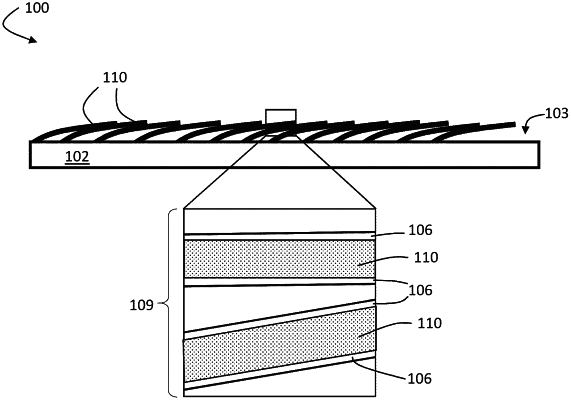| CPC H01G 11/28 (2013.01) [H01G 11/36 (2013.01); H01G 11/56 (2013.01); H01G 11/68 (2013.01); H01G 11/70 (2013.01); H01M 4/133 (2013.01); H01M 4/366 (2013.01); H01M 4/583 (2013.01); H01M 4/624 (2013.01)] | 8 Claims |

|
1. A method, comprising:
rearranging a plurality of elongated electronically-conductive nanostructures on a surface such that the plurality of elongated electronically-conductive nanostructures transition from a first arrangement in which longest dimensions of the elongated electronically-conductive nanostructures are oriented substantially perpendicular to the surface to a second arrangement in which a majority of the elongated electronically-conductive nanostructures have longest dimensions oriented substantially parallel to the surface and oriented more greatly in a first direction parallel to the surface than in another direction perpendicular to the first direction; and
associating a pseudocapacitive material with the plurality of elongated electronically-conductive nanostructures after the rearranging such that:
the majority of the elongated electronically-conductive nanostructures are conformally coated with the pseudocapacitive material,
a thickness of the pseudocapacitive material, over at least 80% of a surface area of the elongated electronically-conductive nanostructures that are coated with the pseudocapacitive material, does not deviate from an average thickness of the pseudocapacitive material by more than 50%, and
the majority of the elongated electronically-conductive nanostructures have a first end that is attached to the surface and a second end opposite the first end that is not attached to the surface.
|